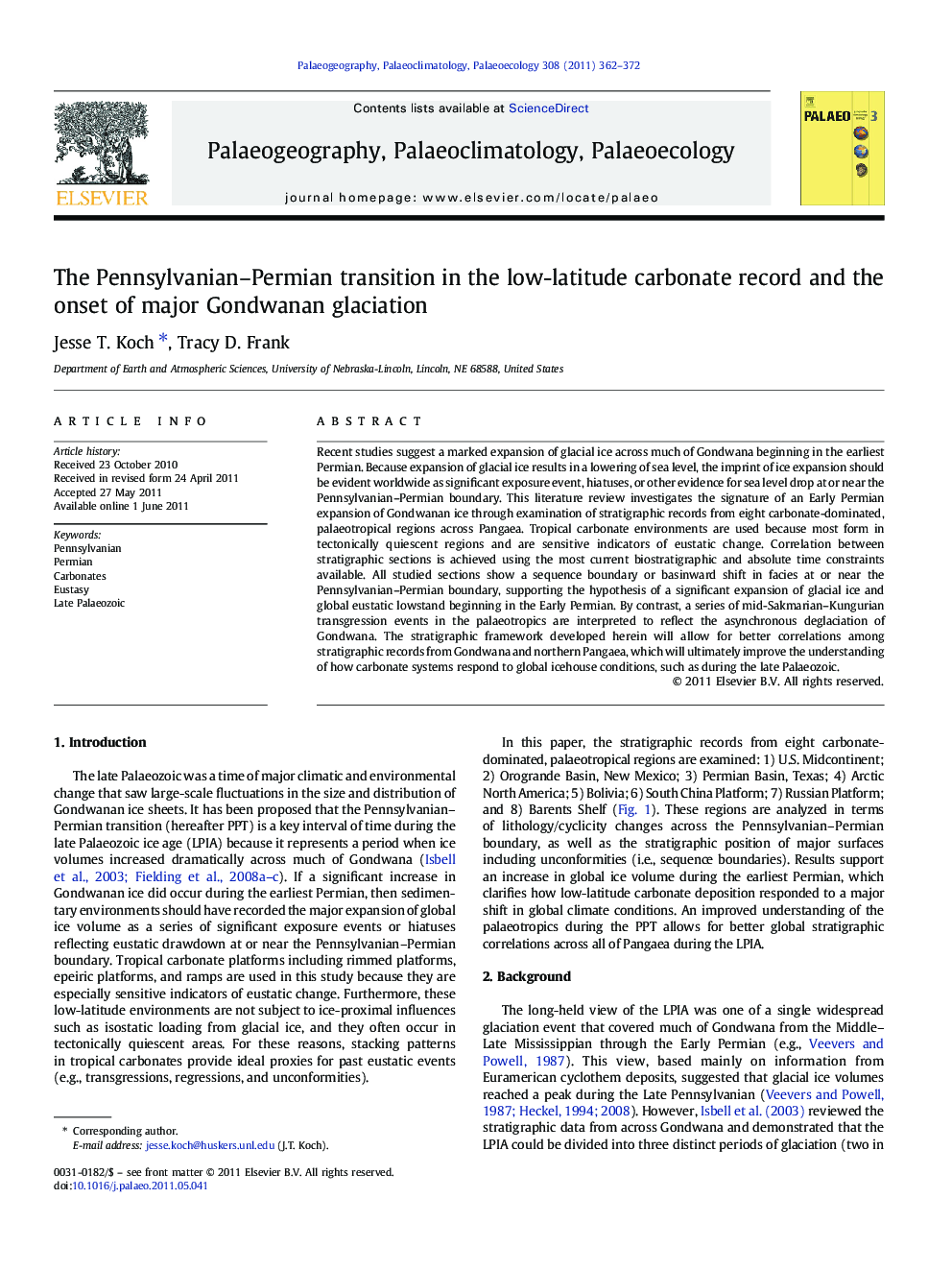| Article ID | Journal | Published Year | Pages | File Type |
|---|---|---|---|---|
| 4467131 | Palaeogeography, Palaeoclimatology, Palaeoecology | 2011 | 11 Pages |
Recent studies suggest a marked expansion of glacial ice across much of Gondwana beginning in the earliest Permian. Because expansion of glacial ice results in a lowering of sea level, the imprint of ice expansion should be evident worldwide as significant exposure event, hiatuses, or other evidence for sea level drop at or near the Pennsylvanian–Permian boundary. This literature review investigates the signature of an Early Permian expansion of Gondwanan ice through examination of stratigraphic records from eight carbonate-dominated, palaeotropical regions across Pangaea. Tropical carbonate environments are used because most form in tectonically quiescent regions and are sensitive indicators of eustatic change. Correlation between stratigraphic sections is achieved using the most current biostratigraphic and absolute time constraints available. All studied sections show a sequence boundary or basinward shift in facies at or near the Pennsylvanian–Permian boundary, supporting the hypothesis of a significant expansion of glacial ice and global eustatic lowstand beginning in the Early Permian. By contrast, a series of mid-Sakmarian–Kungurian transgression events in the palaeotropics are interpreted to reflect the asynchronous deglaciation of Gondwana. The stratigraphic framework developed herein will allow for better correlations among stratigraphic records from Gondwana and northern Pangaea, which will ultimately improve the understanding of how carbonate systems respond to global icehouse conditions, such as during the late Palaeozoic.
► We examine global stratigraphic data from the late Palaeozoic. ► Data suggests a sequence boundary at the Pennsylvanian–Permian boundary. ► Our data suggests an expansion of glacial ice beginning in the Early Permian.
